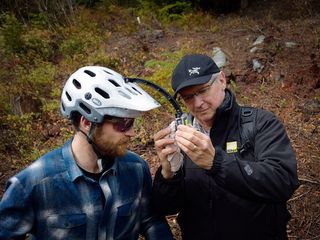Create Stable Timelapses With Microsoft Hyperlapse, Available On Desktop And Mobile
Microsoft Hyperlapse is a new program that you can use to easily create stable and fluid timelapses without needing expensive camera equipment.

If you've ever tried to make a timelapse, you know how tricky it can be. The easiest thing to do is to stick a camera on a tripod, in a static location, and take a picture every few seconds, but the moment you try to make a timelapse of you actually doing something -- especially first person action -- things suddenly get a lot trickier. Microsoft aims to solve this problem with some new software called Microsoft Hyperlapse.
Microsoft Hyperlapse is a multi-platform software package that you can use to turn action videos into stabilized timelapses. The idea that this software is needed comes from a simple problem. In the past, the only real way to make a stable first person action timelapse is by using heaps of expensive camera gear in order to stabilize the original shot, and then turn that into a timelapse.
If you've ever tried to make a timelapse before, you may know that most timelapsing software simply takes a frame every 10 frames or so, and then stitches those together. The end result is indeed a sped-up video, but if you've been holding the camera, it won't be stable. Heck, it may even simply be unwatchable.
By contrast, Microsoft Hyperlapse takes the original video and tries to figure out the 3D landscape in which it is filmed, along with the dominant path taken throughout the moving scene. Once Hyperlapse has this figured out, it uses bits and pieces from various frames in the video to create a stable, sped-up video.
The mobile version of the software works a little differently. Instead of figuring out the most dominant path and stitching together parts of frames, it finds frames that have the most overlap and uses those, instead of simply grabbing every 10th frame. This won't give the same quality videos as through the desktop version of the software, but does enable it to work on performance and power-limited mobile platforms
You certainly won't get cinema-quality timelapses from this software, but this is a very inexpensive way to show off a bike ride to your friends, or your commute to work, or what have you. Microsoft Hyperlapse works on Android, Windows Phone, Windows, and Microsoft Azure. All you need to provide is the camera in your phone, or if you want slightly better results, an action camera such as a GoPro.
In order to create a Hyperlapse, you simply capture the video on one of the devices and then import it into the Hyperlapse app or program. On your mobile phone, you simply use your standard camera app. Indirectly, this also makes it compatible with iPhones, because all you will need to do is import the captured video to your PC and use the public preview version of Microsoft Hyperlapse Pro.
Stay on the Cutting Edge
Join the experts who read Tom's Hardware for the inside track on enthusiast PC tech news — and have for over 25 years. We'll send breaking news and in-depth reviews of CPUs, GPUs, AI, maker hardware and more straight to your inbox.
You can start playing with Hyperlapse on all the aforementioned platforms immediately (with the caveat that the list of officially supported mobile devices is relatively small). The landing page is available here, which contains additional information and download links.
Follow Niels Broekhuijsen @NBroekhuijsen. Follow us @tomshardware, on Facebook and on Google+.
Niels Broekhuijsen is a Contributing Writer for Tom's Hardware US. He reviews cases, water cooling and pc builds.
-
nukemaster Outside of shooting very slow moments, Why do people want to people want to do this with normal speed motion. It makes it faster, but more jumpy. Did we not release phones that record at higher frame rates already allowing smoother motion when played back at the right speed.Reply
Or will this just be more easy for the gif's that have retaken the net. -
alextheblue ReplyOutside of shooting very slow moments, Why do people want to people want to do this with normal speed motion. It makes it faster, but more jumpy. Did we not release phones that record at higher frame rates already allowing smoother motion when played back at the right speed.
Did you even skim the article? Faster. That's the point of a timelapse, speeding things up. But when you do a timelapse of a high-motion first-person video using traditional methods, it is janky as hell. This Hyperlapse software (especially the desktop version), is a MUCH smarter method of creating a STABLE timelapse under those conditions.
Or will this just be more easy for the gif's that have retaken the net.
Most Popular


